| 1 | Dumeril’s boa |
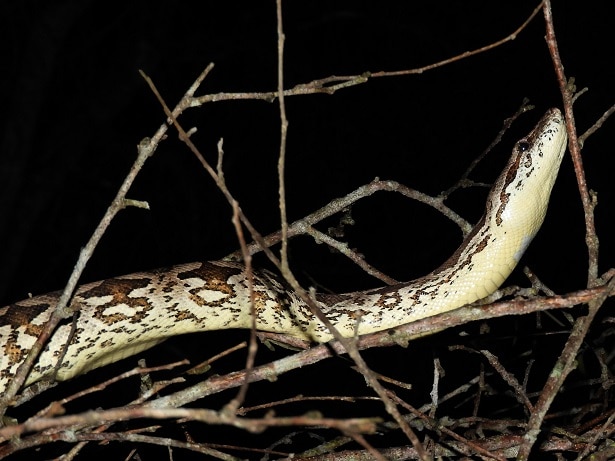
The main boa of southern Madagascar, with the Madagascan ground boa controlling the northern half. Dumeril’s boa (Acrantophis dumerili) is a hefty constrictor measuring up to 259cm, which climbs trees only occasionally, and is particularly common in dry, crunchy woodlands.
This species was once extremely popular in captivity, and although they’re less common these days (due to falling wild populations), one advantage in their prime was how easy they were to feed. Dumeril’s boas are simple mammal-eaters, and basic rats and mice are more than satisfactory. They’re also confirmed to prey on lemurs, namely the southern bamboo lemur.
Dumeril’s boas are ambush predators, and would fail if they tried anything else, as they’re far too cumbersome to stalk a lemur stealthily. But they do produce an exceptional burst of speed while lunging, which is difficult for a rat to dodge.
It’s also possible that Dumeril’s boas hunt bats, as they’ve been spotted lurking in caves in Madagascar’s Tsimanampesotse National Park. It’s possible that they copy Cuban boas, which famously wait outside caves at sunset and seize bats as they fly out in their thousands. Common bat species in Madagascar include the Malagasy mouse-eared bat and Madagascar flying fox. Dumeril’s boa is declining in the wild, but still far from extinction.
| 2 | Monocled cobra |
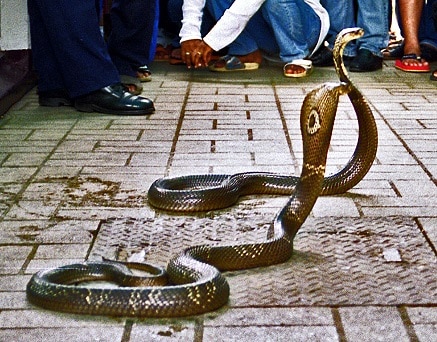
The most common cobra in Thailand, as well as Vietnam and Cambodia. Monocled cobras measure 100-150cm, with a maximum of 230cm. They’re easily identifiable by the single round marking on their hood, rather than double like the Indian cobra (AKA the spectacled cobra).
Like most cobras, Naja kouthia has a flexible diet. They can enjoy the feathers of a bird, scales of a snake, or sliminess of a frog, but a 2011 study found that the fur of a mammal tickles their fancy the most. Mammals contributed 75.8% of prey in wild monocled cobras, followed by birds’ eggs at 11.3% and reptiles at 8.0%. This involved 93 prey taken from 75 cobras in Thailand’s Singburi province.
Most brutally, several monocled cobras contained multiple nestling mice, as though they’d visited their den and gobbled up several at once, possibly by invading their winding burrows.
The venom of this species is immensely variable. A monocled cobra can 1) kill you, 2) leave you disfigured, 3) deliver a lucky dry bite, or 4) paralyse you for four days, before a full and complete recovery. Many scenarios are possible with this roulette wheel of a snake. Living alongside this species is terrifying, as they commonly invade gardens, kitchens and supermarkets in Bangkok. But a rare benefit is that they hoover up rodents for farmers, reducing the economic damage they cause.
| 3 | Crossed pitviper |
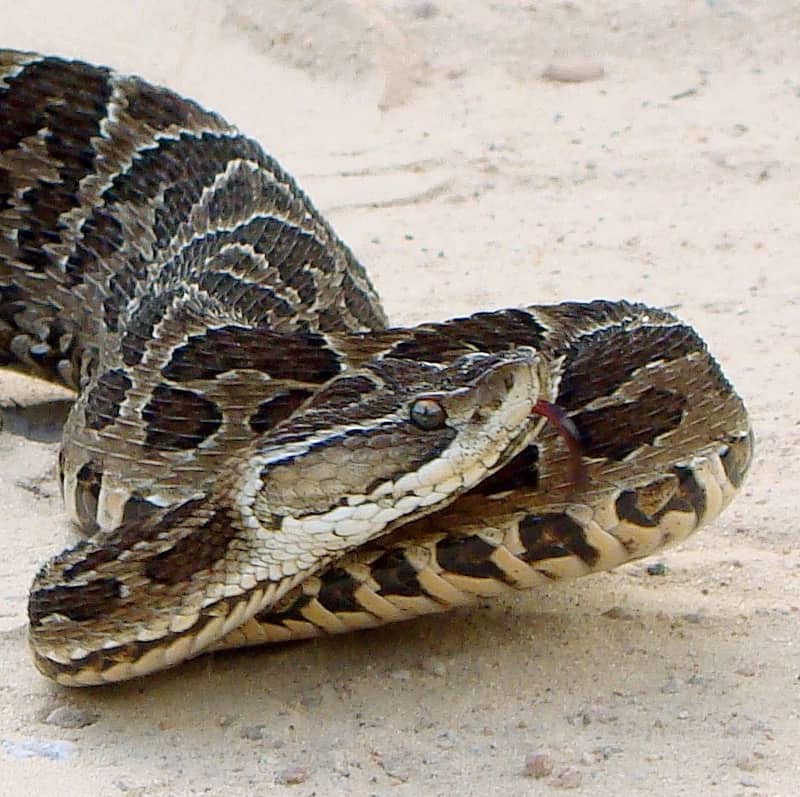
The Bothrops pitviper genus has 30 members in Brazil, specialising in tissue necrosis and swelling. The most mammal-loving of these nightmares is the crossed pitviper, resident of southern Brazil, a pitviper which peaks at 169cm.
This species consumes mammals exclusively, with not a reptile or amphibian in sight. Two studies have analysed the crossed pitviper’s diet, both of which detected 100% mammals. In one, rats and mice comprised 80.8% of meals, and this study had a strong sample size, with 182 crossed pitvipers examined.
Unlike a monocled cobra, crossed pitvipers don’t lurk in crop fields and helpfully eat rodent pests. Nor do they lurk in southern Brazil’s dark, spooky Atlantic forests (like a jararacussu). Instead, this is a species of open cerrado grassland, sometimes bordering old dirt roads, often close to peaceful villages. They live a lazy lifestyle, moving just a few metres per day.
While seemingly peaceful, with an abundance of swaying grass and splendid views, these grasslands are in reality a constant battleground, populated by rival animals forced to take up arms. There’s the resident mice and rats, skillfully avoiding the hungry crossed pitvipers determined to eat them. Then there’s watchful burrowing owls, determined to eat the crossed pitviper, which must avoid their gaze using a delicate balancing act.
Crossed pitvipers have been found in burrows with tiny entrances just 10cm wide. It’s almost certain that they swallow the inhabitants before taking up residence.
| 4 | Black mamba |
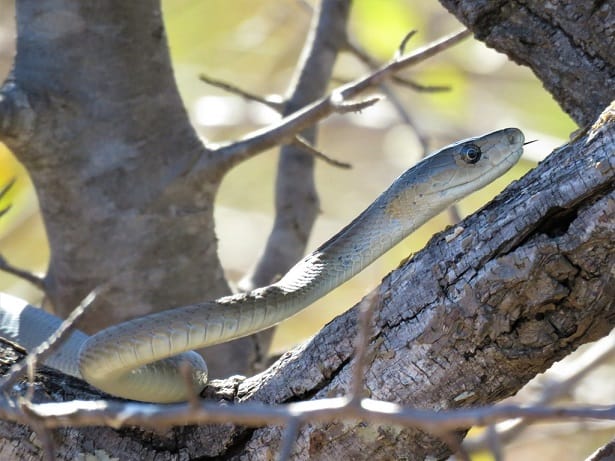
It’s mainly the rapid-acting, paralysing venom that gets the attention with black mambas. This notorious African terror can kill you in under one hour, but they’re interesting in more subtle ways too. For example, black mambas completely avoid eating reptiles and amphibians, turning up their noses if presented with them in captivity. Instead, they eat a diet of 81.48% mammals and 14.81% birds, according to a study from Namibia and eastern Transvaal.
Their diet is completely different to their fellow unstoppable serpent icon, the king cobra, which mainly swallows fellow snakes, venom glands and all. Black mambas have a milder menu of tree squirrels, Namaqua rock rats and red veld rats.
Black mambas actually rank among the top ten longest snakes on earth, perhaps reaching 4.3 metres. But unlike an African rock python, there’s no chance of one eating a human child, as their bodies are far too thin. Black mambas stick to relatively small meals. Instead, the real worry is their hyper-alert, defensive personality.
Black mambas aren’t quite the lord of Africa, as they’ve been found in the stomachs of Nile crocodiles, and reportedly flee when they see one stomping out of a river. But they do have one extra worrying skill – sensing the presence of human beings from 40 metres away.
| 5 | Tzabcan rattlesnake |
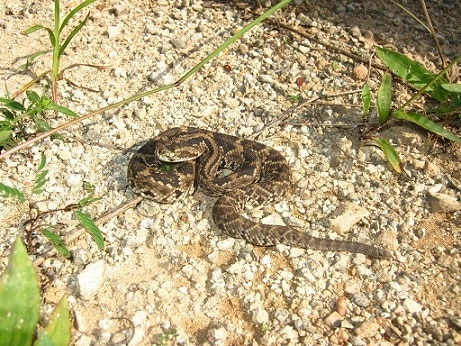
The ruling rattlesnake of Mexico’s Yucatan peninsular. This is the safest state in Mexico, home to ancient pyramids which some people believe were built by aliens, and the closest landmass on Earth to the dino-killing asteroid impact crater. Central American coral snakes are another venomous species found here, but they focus on fellow snakes, whereas Tzabcan rattlesnakes (Crotalus tzabcan) eat exclusively mammals.
A 2020 study found a diet consisting of 100% mammals, in a sample of 28 prey found in 50 Tzabcan rattlesnakes. Rodents form a large chunk of their prey, including the Toltec cotton rat and Gaumer’s spiny pocket mouse.
Crotalus tzabcan reaches a maximum of 181.8cm, with males slightly exceeding females. Mammal-exclusive diets aren’t guaranteed for rattlesnakes worldwide. The rock rattlesnake of Arizona eats 50% reptiles and 20% mammals, whereas the east and west diamondback rattlesnakes eat around 90% mammals, similarly to Crotalus tzabcan.
The Tzcaban rattlesnake isn’t a species you’re likely to meet. As they inhabit a peninsular, nobody’s forcing you to enter their realm. You can keep driving straight ahead rather than taking the road left, and not risk crossing the Yucatan heartlands they control with an iron fist. But as you plough deeper into central America, there’s no avoiding snakes forever. Sooner or later, you’ll come face to face with a hissing serpent, possibly one of Crotalus tzabcan’s mammal-munching mates like the Central American rattlesnake (Crotalus simus).
| 6 | Reticulated python |
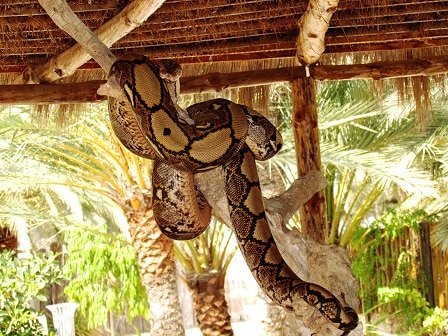
It may have occurred to you that humans are mammals too, but rest assured that most snakes on this list aren’t eyeing you up, imagining you covered with salt and pepper. Most are simply too small, but the one dangerous exception is the reticulated python, Earth’s longest surviving snake, among at least 3900 species worldwide.
Reticulated pythons reach an all-time wild record of 6.85 metres. The reason they feed on mammals is that they’re the only creatures consistently large enough to satisfy their enormous needs. Monkeys and wild boar are on the menu, while an Asian rice frog would be horribly unsatisfactory.
In 2022, an Indonesian woman was killed and swallowed by a reticulated python, though her body was quickly rescued, allowing for a funeral (and the snake to be killed). There was a sort of heartwarming story in 2011 about a young Cambodian boy keeping one as a beloved bedroom pet for over 5 years, but internet commenters believed that when the python stretched out its body on the bed, it was actually measuring the boy.
The duo were eventually separated, and there’s no doubt that reticulated pythons won’t hesitate to hunt human children. Like a great white shark, it depends on how hungry they are at the time, whether they’ve had a satisfying meal recently.
| 7 | Steppe ratsnake |
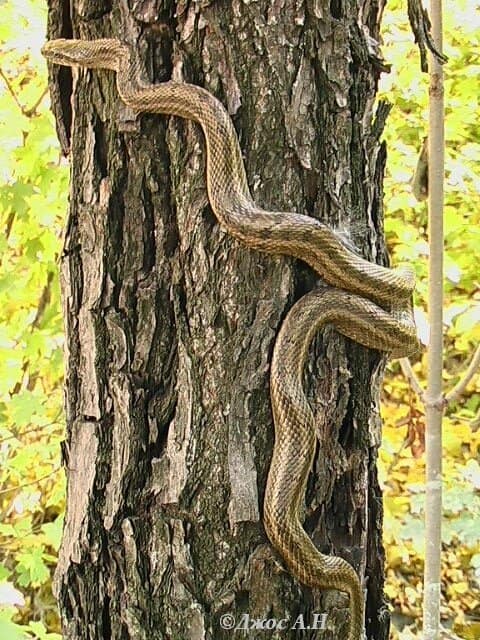
The most widespread member of the Elaphe ratsnake genus, which has 18 members across Eurasia. The steppe ratsnake (Elaphe dione) ranges from Ukraine in the west, all the way to Korea in the far east, and is totally harmless to humans.
Steppe ratsnakes are typically 1 metre, but can reach up to 160cm. With favourite meals including Korean field mice and the ubiquitous brown rat, this species is a mammal-eating machine. A 2022 study confirmed these reports, as among 79 individual steppe ratsnakes examined, every single prey discovered inside was a mammal.
Steppe ratsnakes are neither too fast nor grindingly slow. They roam the countryside endlessly and unceasingly, searching for trodden vegetation which may indicate a well-worn mammal trail. Combined with constant tongue flecking, and a high sensitivity to small mammal scents, it’s virtually guaranteed that the steppe ratsnake will find a rat sooner or later.
This species is a constrictor, albeit a relatively inefficient one, relying more on skillful grappling. Rustling bushes and strangely swaying grass may indicate that a steppe ratsnake is moving nearby. Their mammal-heavy diet also makes the steppe ratsnake relatively easy to keep in captivity. You can practically fling this species a defrosted mouse over your shoulder while you watch TV to great success.
| 8 | Asp viper |
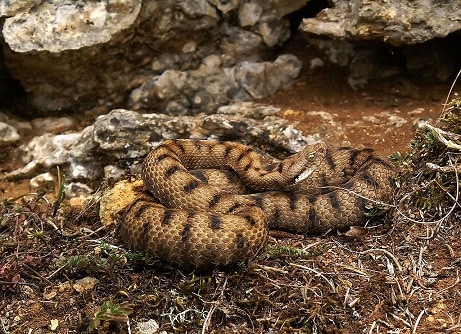
France’s main venomous snake isn’t just a mammal obsessive, but gains 98% of its meals from voles, according to one French study. This occasionally fatal species inhabits the lower 80% of France, far northern Spain, southern Switzerland, and most of Italy. They particularly like grassy meadows, lurking in thick hedges on their borders, and are relatively short, with a maximum length of 82cm.
Asp vipers experience an ontogenetic change in their diet, eating 81% reptiles as a newborn, before mammals push everything else aside in adulthood. Adults don’t abandon reptiles completely, but love small, scurrying creatures that share their grassy habitats.
A study from Central Italy’s Tolfa mountains found a diet of 81.4% mammals, especially the common shrew and house mouse. Weirdly, a study from northern Italy found that they ignored the local mice, barely eating the native wood mouse and striped field mouse. Instead, their favourites were the Savii’s pine vole, in line with the French studies, and lesser white-toothed shrew.
Either way, it’s in the same ballpark: small traditional European mammals, compared to the neighbouring grass snake which mainly eats frogs. Asp viper bites trigger swelling, blistering and abdominal pain, and have neurotoxic properties in certain regions like Nice.
| 9 | Ladder snake |
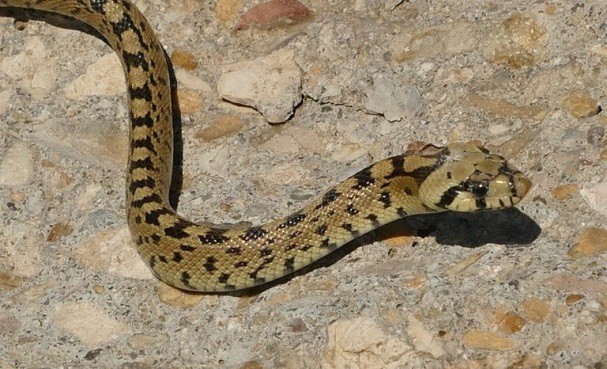
Spain’s top mammal-eating snake. Montpellier snakes are flexible vacuum cleaners, while horseshoe whipsnakes lean towards reptiles, but one study found that the ladder snake ate 87.2% mammals, followed by a smattering of birds at 11.7%.
Ladder snakes measure 100cm, with a record of 165.0cm, and are non-venomous, though occasionally snappy. They were named for the ladder patterns down their spine (which fade in adulthood), and mainly inhabit dry countryside areas like dirt tracks and olive plantations. Both ladder snakes and horseshoe whipsnakes are invasive species on Ibiza, but only the latter is considered dangerous, as they’re wreaking havoc on the native Ibiza wall lizard, while the ladder snake mostly ignores them.
The Mediterranean pine vole is a particular favourite of this species. Ladder snakes are not only Spain’s top mammal-muncher, but go to extreme lengths to get them. Ladder snakes ambush mice families while they sleep, by finding burrow entrances and slithering through the underground tunnels, like a basilisk slithering through plumbing.
When they find the resting chamber, ladder snakes can swallow several sleeping mice at once, which are helpless to defend themselves. However, they’re not completely doomed. The more dim-witted mice will be swallowed instantly, but faster, more inventive mice may dart aside, run over the ladder snake’s back, or inflict a quick gnawing wound. Sometimes, there’s no escape, as they find themselves backed into a dead end tunnel.
| 10 | Coastal taipan |
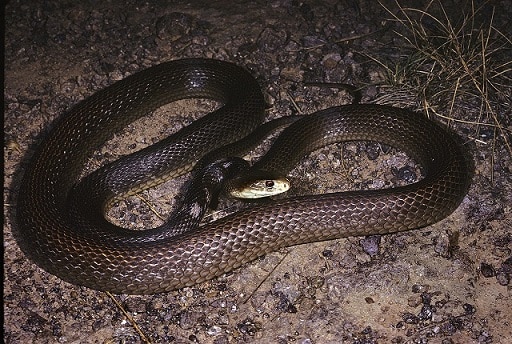
The two taipans, the inland and coastal taipan, are easily the most mammal-obsessed of Australia’s many venomous snakes. Inland taipans live in dry clay cracks deep within the outback, whereas coastal taipans inhabit civilised areas along the east coast like fields and woods, including near Sydney. They’re fast and agile, and capable of injecting a jabbing bite and vanishing down a hill before you have any time to react.
According to a study on wild coastal taipans, 18 of their prey were mammals, versus just 1 bird. Their speed is a natural consequence, as gnawing rodents are capable of killing coastal taipans in a few seconds with a lucky strike. Their neurotoxic venom is also useful, paralysing the rat’s limbs and removing them cleanly from the fight.
Coastal taipans completely ignore frogs, leaving them to red-bellied black snakes. They pay no attention to reptiles, leaving them to small-eyed snakes. Coastal taipans are active foragers, usually slithering with their head raised alertly. When they encounter a rodent, they’ve been observed to freeze for a second, before unleashing a succession of rapid strikes. Confirmed prey in their diet include dusky field rats, pale field rats, and long-nosed bandicoots. The coastal taipan reaches a hefty record of 335cm.
